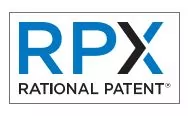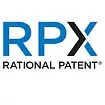The Federal Circuit has ruled that appellate review is available for USPTO decisions not to initiate reexaminations based on inter partes review (IPR) estoppel, which bars reexam requests by petitioners whose IPRs against the same claims have reached final written decisions. In Alarm.com v. Hirshfeld, the court held in a February 24 precedential decision that the Eastern District of Virginia was wrong to reject an Administrative Procedure Act (APA) lawsuit challenging a reexam denial on that basis. The Federal Circuit instead concluded, contrary to the district court, that the relevant statutory scheme does not preclude appeals of IPR estoppel decisions with respect to reexams. The decision comes less than a month after the Federal Circuit broadened the applicable standard for IPR estoppel as applied in district court—an already wider-reaching requirement than for reexams.
The estoppel decision here at issue stemmed from three IPRs filed by Alarm.com in 2017 against three patents held by Vivint, leading to final decisions that rejected challenges as to certain claims. The following year, Alarm.com then filed requests for ex parte reexamination of those claims. However, the Office of Patent Legal Administration, acting on behalf of the USPTO director, denied those requests without reaching the merits, holding sua sponte that the reexams were estopped under 35 USC Section 315(e)(1).
That provision bars a petitioner who challenged a patent claim in an IPR that reached a final written decision under Section 318(a) from requesting a USPTO proceeding against that claim "on any ground that the petitioner raised or reasonably could have raised during that" IPR. Here, the director, after issuing and applying a "Clarification of General Policy and Practice" with respect to this requirement, concluded that Alarm.com could have reasonably raised the grounds in its reexam request in its prior IPRs, terminating the reexam without reaching the merits.
Alarm.com then filed its district court APA challenge against the USPTO and the director in February 2021, arguing that the decisions denying its reexams were "arbitrary, capricious, an abuse of discretion, or otherwise not in accordance with law". The company also sought to permanently enjoin the USPTO from applying the General Policy "to grounds presented in any future requests or petitions". However, in June 2021, District Judge Claude M. Hilton dismissed the case for lack of jurisdiction, holding that the government had overcome the presumption in favor of judicial review by showing that the statutory scheme provides no right of appeal.
In doing so, the court noted that only the patent owner has the explicit right to appeal an ex parte reexam decision, while third parties have no statutory right to participate in such a reexam apart from filing the request and then filing a reply to the patent owner. Since "Congress took great pains to limit a third-party petitioner's role in the reexamination process", Judge Hilton held that allowing third parties to challenge "predicate reexamination decisions" would "cut[] against the structure of the Patent Act". This prohibition on appeals does "not include an exception for non-substantive decisions", thereby depriving the court of jurisdiction.
Lastly, Judge Hilton rejected Alarm.com's claims challenging the General Policy under the APA due to lack of standing, holding that the APA only allows appeals of final agency actions—whereas the General Policy, though expressed in a decision terminating the reexams, was not itself a decision but merely an explanation of "the Director's reasoning for his own decisions regarding statutory estoppel".
The Federal Circuit rejected the district court's decision as to the statutory scheme in its ruling on appeal, holding instead that Judge Hilton had applied the wrong standard. Rather, the Supreme Court established in Cuozzo Speed Technologies v. Lee that "the presumption of reviewability may be overcome only by 'clear and convincing indications, drawn from specific language, specific legislative history, and inferences of intent drawn from the statutory scheme as a whole, that Congress intended to bar review'" (quoting Cuozzo).
Applying that standard, the Federal Circuit ruled that Alarm.com's APA challenge was not precluded, as the "text, statutory scheme, and legislative history pertaining to ex parte reexamination do not evince a fairly discernable intent to preclude judicial review of these decisions". In particular, the court noted that the only applicable statutory restriction on judicial review, Section 303(c), is narrowly defined to preclude appeals from decisions that a reexam request raises "no substantial new question of patentability"—which even the government conceded does not bar Alarm.com's challenges. Since "[t]he estoppel determinations made under § 315(e)(1) here are outside the scope of § 303(c)", the Federal Circuit determined that the latter provision "does not support preclusion here". The court explained that such a reading of Section 303(c) as narrow in scope is confirmed by the Supreme Court's decisions in Thyrv v. Click-to-Call, which established that decisions applying the statutory time bar could not be appealed only because they are "closely related" to IPR institution—matters for which appellate review is barred under Section 314(d), a much broader provision than Section 303(c), according to Cuozzo.
Based on the above reading of the statute, Cuozzo and Thryv, and other Federal Circuit decisions treating Section 303(c) as narrow in scope, the court concluded that this provision "does not apply to the estoppel decisions at issue here". Extending Section 303(c) to reexam estoppel in this context "would breach the provision's textual limits and would be contrary to the just-discussed decisions addressing § 303(c)" as well as other precedent concerning the "textual limits of other non-reviewability provisions" in the Patent Act, per the court.
The Federal Circuit also rejected the government's argument to the contrary. Essentially, the government had asserted that the statutory scheme bars appellate review outside of Section 303(c) (decisions on whether there are "substantial new questions of patentability") when viewed in light of Section 306 (establishing a patent owner's affirmative right to appeal an unpatentability decision in a reexam). "This basis is insufficient to overcome the presumption of reviewability as a matter of recognized principle and precedent", held the Federal Circuit, in light of the principle established by the Supreme Court in Sackett v. EPA: "[I]f the express provision of judicial review in one section of a long and complicated statute were alone enough to overcome the APA's presumption of reviewability for all final agency action, it would not be much of a presumption at all". The court then proceeded to reject the cases cited by the government in support of its position.
The Federal Circuit next reviewed the relevant legislative history, concluding that it "does not support an inference of congressional intent to bar review of the determination in question here". Specifically, with respect to the "strongest evidence" in favor of the government's position, a House Judiciary Committee report on the law that ultimately created the ex parte reexam process in 1980, the court found that there was "no reason to infer that the Committee in 1980 was referring to anything other than the ex parte reexamination scheme it was adopting at the time". Also significant was the fact that in passing the America Invents Act, it left Section 303(c) intact while implementing an explicit bar on appellate review as part of the new IPR regime (Section 314(d)), and while changing other aspects of the ex parte reexam system.
Based on the foregoing statutory analysis, the Federal Circuit held that "review of the Director's § 315(e)(1) estoppel decisions here is available to Alarm.com under the APA". As Alarm.com had conditionally withdrawn its APA challenge to the General Policy in the event that the court granted its challenges as to the vacatur decisions, the court did not address that issue.
As noted above, the Alarm.com decision marked the second time in recent weeks that the Federal Circuit has addressed PTAB-related estoppel, albeit in a different context—that of IPR estoppel in district court. Under Section 315(e)(2), a petitioner in an IPR that reaches a final decision (along with its real-party-in-interest or privy) may not assert, either in district court or before the International Trade Commission (ITC), an invalidity claim based "on any ground that the petitioner raised or reasonably could have raised during that" IPR. In its February 4 Caltech decision, which also overturned a $1.1B damages award against Apple and Broadcom, the Federal Circuit resolved a district court split over the application of that requirement by overruling its 2016 Shaw Industries Group v. Creel Automated Systems decision, holding that a petitioner is estopped not just from later asserting arguments actually raised in a successful petition, but also from including those arguments that they "reasonably could have" included.
However, the decision's wording caused some confusion among various stakeholders as to its scope, as the Federal Circuit held that IPR estoppel applies in particular to "all claims and grounds not in the IPR but which reasonably could have been included" (emphasis added). This language led some to conclude that the Federal Circuit was now holding that an IPR against even one claim of a patent could lead to estoppel as to all claims of that patent.
On February 22, the Federal Circuit sought to resolve that confusion by issuing an errata opinion modifying that part of its original decision, with the new language now clarifying that Caltech extends estoppel to grounds that "reasonably could have" been included but not to all claims, in part by changing the aforementioned language to the following: "all grounds not stated in the petition but which reasonably could have been asserted against the claims included".
For coverage of the original Caltech decision's holding on estoppel, see " Federal Circuit Overrules Shaw in Caltech Decision, Expanding the Scope of IPR Estoppel" (February 2022).
The content of this article is intended to provide a general guide to the subject matter. Specialist advice should be sought about your specific circumstances.


